Think back on this for a second: how many anime end with their finest episode? I would have to imagine it’s a pretty small number, because there aren’t a hell of a lot of examples popping into my head. But it’s awfully nice when it does happen, and for my money it absolutely did with Ballroom e Youkoso. I could hardly have imagined a more satisfying way to bring this series to a conclusion (apart from one niggle which is down to personal taste, which I’ll discuss in a bit). And that’s all the more remarkable when you consider that the anime actually moved ahead of the manga with this final episode.
Series review posts are always a bit of a puzzle to write, because you have to balance your views of the finale with your views on the series as a whole. In the case of Welcome to the Ballroom I find the two to be rather conflated, and I find myself wanting to talk about the overall picture first – but I don’t think that’s right. And it’s not as though there wasn’t plenty to talk about with this episode, which worked both as a deft conclusion to the linear plot and as a kind of “closing argument” for why Ballroom matters as a story.
One thing that’s fair to say in my case is that the rivalry between Tatara-kun and Kugimiya-san greatly improved the series with its development – even with its relative late entry into the narrative, their relationship may just have been the most interesting one in the show. They’re such fascinating opposites, these two, that it’s hard not to be fascinated watching them interact both on the dance floor and off. The tall, elegant man and the mere slip of a boy – the traditionalist and the revolutionary, the glower and the goofy smile. As people and as dancers, they represent two very different poles.
The most interesting way these two differ, though, is in their basic personality – and as such, their reason for being on the dance floor. This was something the final episode did brilliantly as part of that closing argument – show us why Tatara dances. I believe, on some level, everyone wants – and deserves – to be able to shout “Look at me!” to the world. Even shy people (and I believe Tatara is a shy person) long to be the center of attention sometimes, especially for something they’re good at. This, for me, is the visceral draw of competitive dance – it’s a sport, performance art and an explosion of personal expression all rolled into one. For Tatara, it’s what allowed him to finally become a full person – something everyone will discover in adolescence if they’re very lucky.
Kugimiya, by contrast, is always asking himself the question “Why do I dance?” He talks of having Hell on his shoulders, of how he’s come to hate dance and truly viewed his life-threatening injuries as a lucky break, a chance to escape. This is a complicated, fascinating man, and his relationship with Idogawa-san likewise fascinating. There’s the sense (and this is a general frustration I have with Ballroom) that we’ve barely scratched the surface with this character. And truth be told, that’s even more true in the manga – which is why it’s so frustrating (there’s that word again) that Kugimiya’s cousins only appeared in the ED sequence after being totally cut from the final arc for no obvious reason (apart from wasting more screen time on Akira). They humanized his character in a very important way, and it’s a shame the anime staff decided to play down Kugimiya’s personal story somewhat.
Truth be told, I would have been happy to see either the Kugimiya-Idogawa or Tata-Natsu pairs win – though that niggle for me is that, on balance, I thought both contextually and narratively it really should have been Kugimiya. Either way, though, it was in contrasting these two pairs that Ballroom e Youkoso was able to most successfully deconstruct the nature of competitive dance for the audience. Although one of the pressmen tormenting Gaju-kun noted the similarity to figure skating (which I acknowledge) I think there’s an important difference – even after the phasing out of the 6.0 system, the ISU system in skating does separate out Total Element Score and Program Components Score (in the old days, technical merit and artistic impression). In dance it’s just one judge, one vote – it does indeed all come down to taste. And I truly believe that worked to the kids’ advantage here.
For me, Tatara had already won before the judges’ verdict was ever read, because he’d discovered both his own reason to dance and his way forward with Chinatsu. Again, it’s frustrating because it feels as if we’ve just scratched the surface with his character too – how did his apparent abandonment by his mother drive his need to stand out and be acknowledged? Why is he so reluctant to involve his father in this part of his life, when by all appearances they seem to be quite close? What is clear is that dance allows Tatara to do what he always wished for himself – to be a bigger presence in the world. Sengoku’s obsessive attention to posture way back in the beginning was clearly very important in a symbolic sense.
I have sensed some frustration with the anime version of Welcome to the Ballroom from manga readers (I’ve really only read bits and pieces of it, and apart from the first few chapters read it after them after the corresponding events in the anime) – part of it with the relative lack of extended animated dance sequences. On the whole, though, the anime seems to have been quite well-received – though not by the disc-buying audience, sadly. And I think it mostly succeeded with what it set out to do – tell one boy’s story of how dance changed his life, and what it is about these strange and puzzling sport that some people find so compelling.
For me too Ballroom e Youkoso was largely a success – though as is so often the case with adaptations of ongoing manga, there’s a sense that the anime is ending just when the real story is getting started. With the mangaka Takeuchi-sensei’s continuing health problems it’s going to be some while before the story progresses much even in the manga, and even if we were to get another season (which seems very unlikely) it would be a long ways down the road. That’s the ongoing frustration of the anime fan, but I have no regrets – I’m glad I spent time getting to know these characters and fascinating sport they devote their lives to.
ED Sequence:
Epilogue:


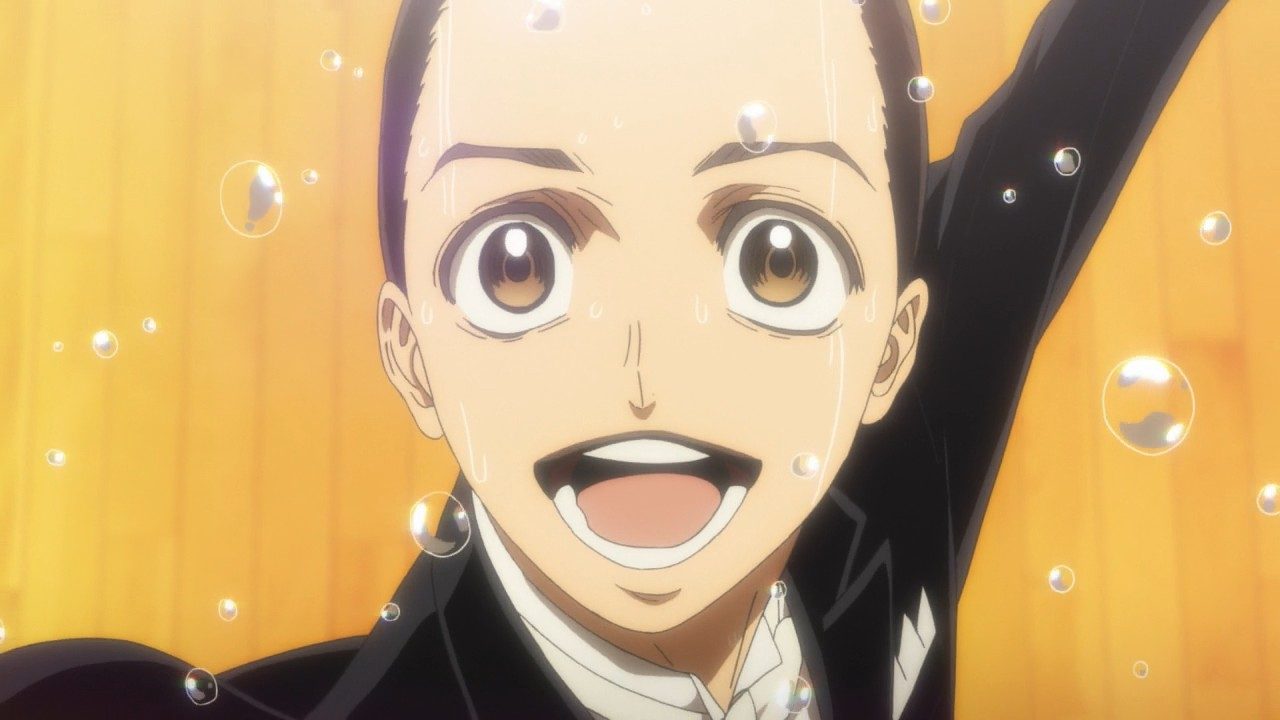
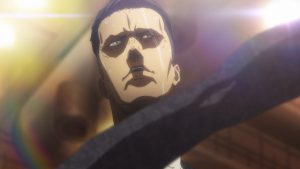
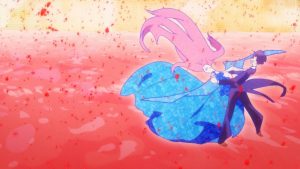
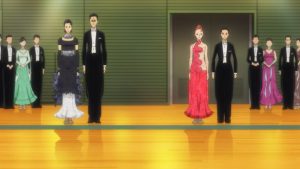

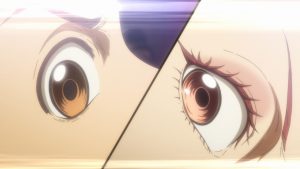
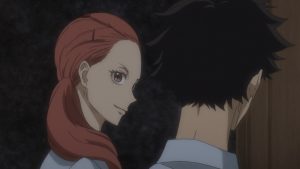
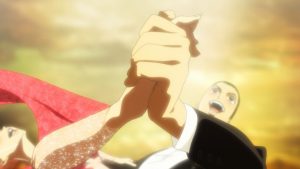
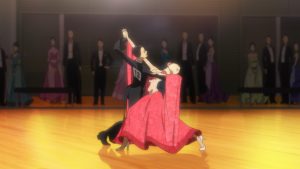

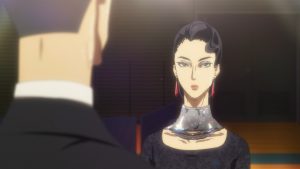

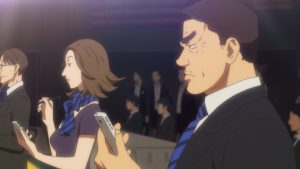
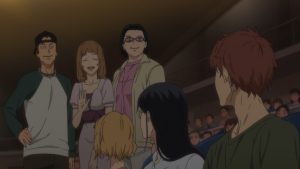
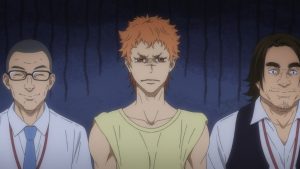
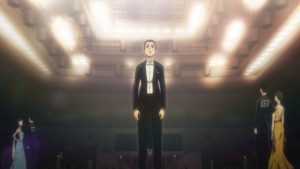
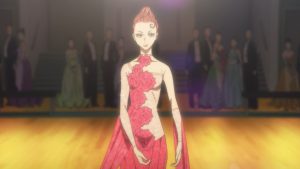
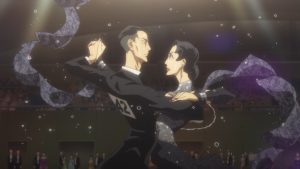
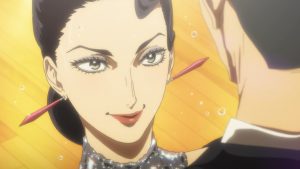
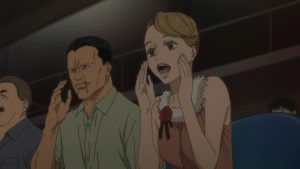


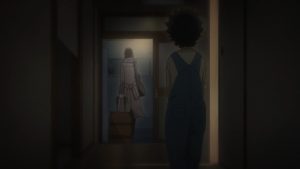
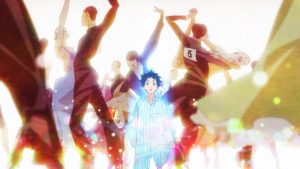
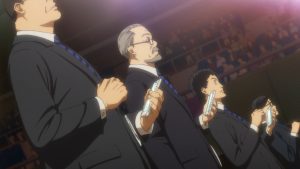
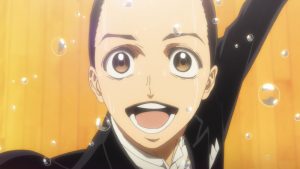
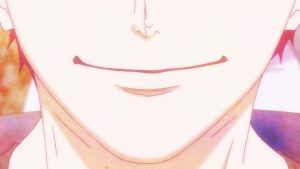
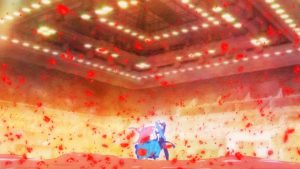
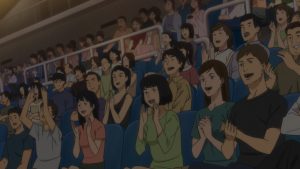
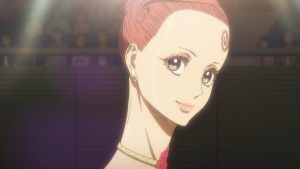

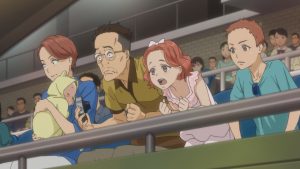
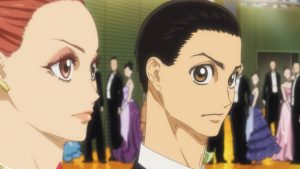
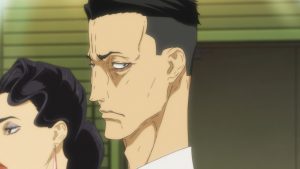
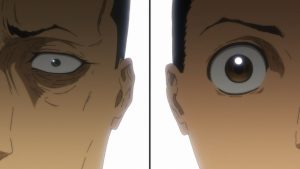

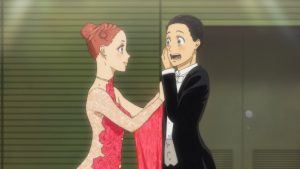
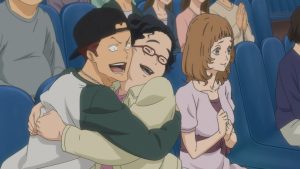
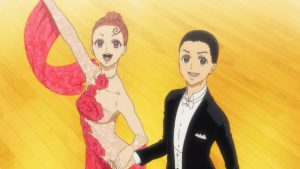
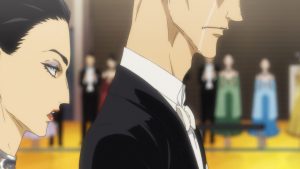
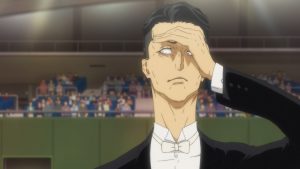
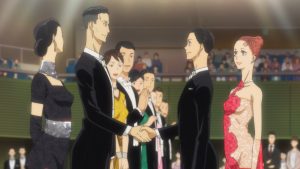

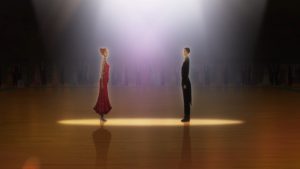
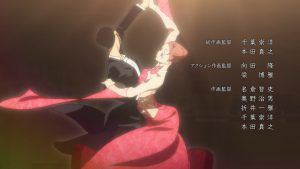
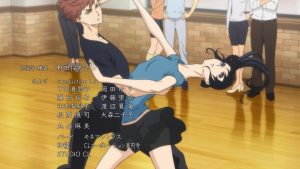
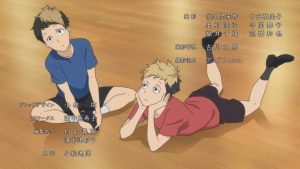
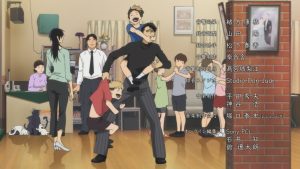

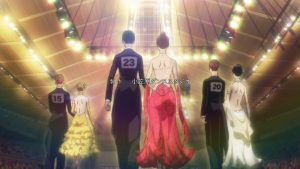

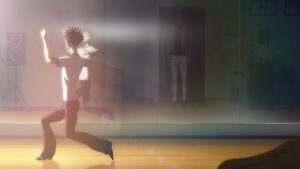



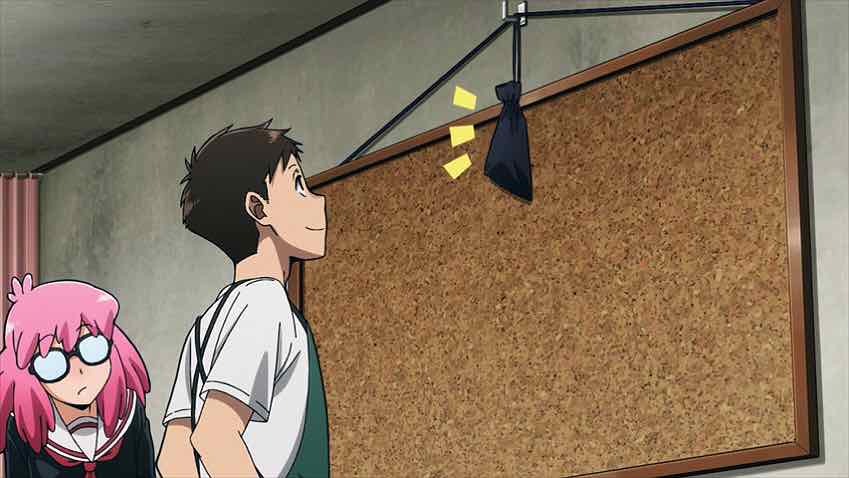

Molly
December 18, 2017 at 12:44 pmI was certain they were going to take this route if only because at the rate the manga is going, it’s doubtful we’re going to get another opportunity to see Tatara win. Despitei all Tatara’s trials and tribulations, when all things are considered, it’s still rather undeserved. What are the odd the manga course corrects?
At least in figure skating, based on the scoring system, you can win the free program, but still lose the competition if you did poorly in the short program. And Tatara and Chinatsu had been underwhelming during most of the previous rounds.
It doesn’t help that Chinatsu hasn’t grown on me at all over the course of the cour. I also feel that Marissa sensei undercut the Kugimiya pair when she challenged Tatara to win but I guess challenging him to make the finals wouldn’t have made for much of a drama.
All in all, it was a pretty neat series. Thanks for all the hard work, Enzo.
Skidda
December 22, 2017 at 7:29 amLoved the final episode. I didn’t think they would be able to close the series this well so it’s a nice surprise.
I guess Tatara finally being rewarded after getting so much crap from pretty much everyone is an appropriate end for this arc. And Kugimia being acknowledged as the superior dancer, from a technical standpoint, made the results satisfactory for me. I’m just afraid Kugimiya’s couple won’t be very relevant again in the future.
Anyway sure I could quibble over the adaptation, for example, the 2nd part, which had a lot more material to cover, skipped a lot of details (they finally included the Tatara’s mom moment though), but it was good enough for me.
One thing I really like about Ballroom e Youkoso is the dynamic betweenTatara/Chinatsu. I like Tatara and Chinatsu as separate characters well enough but seeing them clashing and finding an understanding between each other, both as teenagers and dancers, is really what made the show for me. I thought it was quite unique too, having a mix-paired dynamic like that. I don’t remember any other sport anime working like that. Closest is Chihayafuru I guess, probably not Nodame Cantabile…